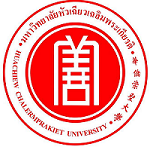Please use this identifier to cite or link to this item:
https://has.hcu.ac.th/jspui/handle/123456789/3677| Title: | Clustering of Road Traffic Injuries During the 7-day Songkran Holiday, Thailand: A Spatial Analysis |
| Authors: | Sopit Tubtimhin Wongsa Laohasiriwong Somsak Pitaksanurat Kittipong Sornlorm Amornrat Luenam โสภิต ทับทิมหิน วงศา เล้าหศิริวงศ์ สมศักดิ์ พิทักษานุรัตน์ กิตติพงษ์ สอนล้อม อมรรัตน์ ลือนาม Khon Kaen University. Faculty of Public Health Khon Kaen University. Faculty of Public Health Khon Kaen University. Faculty of Public Health Huachiew Chalermprakiet University. Faculty of Public and Environmental Health |
| Keywords: | Spatial analysis (Statistics) การวิเคราะห์เชิงพื้นที่ (สถิติ) Remote sensing การวิเคราะห์ข้อมูลระยะไกล Road Traffic Injury การบาดเจ็บจากการจราจรทางถนน Saṅkranʻ -- Thailand สงกรานต์ – ไทย Songkran Festival เทศกาลสงกรานต์ Songkran holiday วันหยุดสงกรานต์ |
| Issue Date: | 2019 |
| Citation: | Kathmandu Univ Med J (KUMJ) 2019;17(67):184-189. |
| Abstract: | Background : Road traffic injury (RTI) is a major cause of fatalities around the world and Thailand is the second leading country. Objective: To determine the spatial pattern of road traffic injury during the 7-day Songkran holiday in Thailand. Method: This study utilized the data obtained from the Information Technology for Emergency Medical System (ITEMS) covering the nationwide road traffic injury during the Songkran festival, Thai New Year holiday (April 9-15, 2015). The Moran's I was used to identify global auto correlation within the country whereas the Local Indicators of Spatial Association (LISA) analysis was administered for analyzing the spatial distribution of RTIs and determining the spatial autocorrelation and correlation of numbers motor vehicles and length of road networks and road traffic injury. Result: During Songkran holiday 2015, the univariate Moran's I of RTIs distribution among provinces in Thailand showed a slightly positive spatial autocorrelation, as the Moran's I was 0.1701, with statistical significance at 0.05. Local indicators of spatial association indicated seven hotspots and five cold spots. In addition, the number of motor vehicles, and length of trunk road (super highway), tertiary roads, secondary roads, and primary roads had positive spatial autocorrelation with road traffic injury, with Moran's I values of 0.173, 0.117, 0.219, 0.162, and 0.279, respectively. Conclusion: This study demonstrates that local indicators of spatial association could detect the spatial pattern of road traffic injury. The number of motor vehicles, length of all roads served as new parameters for determining road traffic injury hotspots. |
| Description: | สามารถเข้าถึงบทความฉบับเต็มได้ที่ : https://pubmed.ncbi.nlm.nih.gov/33305745/ |
| URI: | https://has.hcu.ac.th/jspui/handle/123456789/3677 |
| Appears in Collections: | Public and Environmental Health - Articles Journals |
Files in This Item:
| File | Description | Size | Format | |
|---|---|---|---|---|
| Clustering-of-Road-Traffic-Injuries-During-the-7-day-Songkran-Holiday-Thailand.pdf | 61.92 kB | Adobe PDF | View/Open |
Items in DSpace are protected by copyright, with all rights reserved, unless otherwise indicated.
